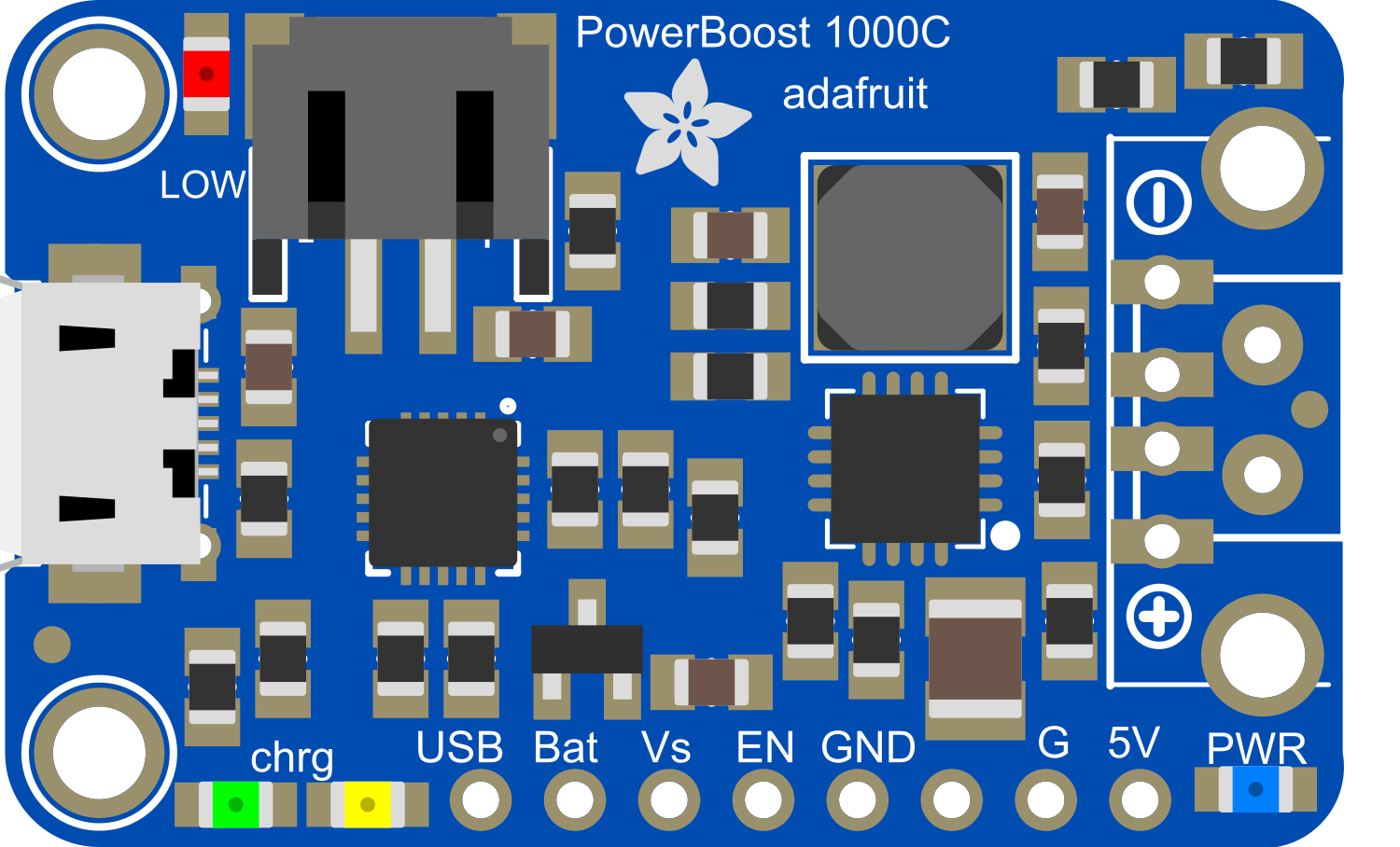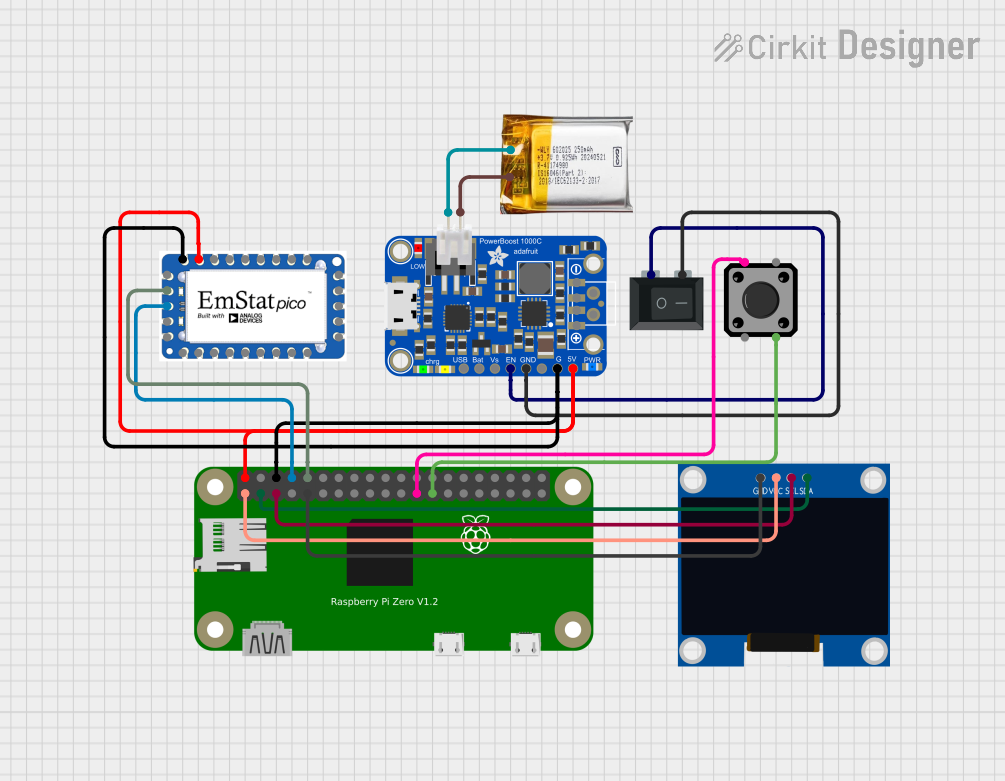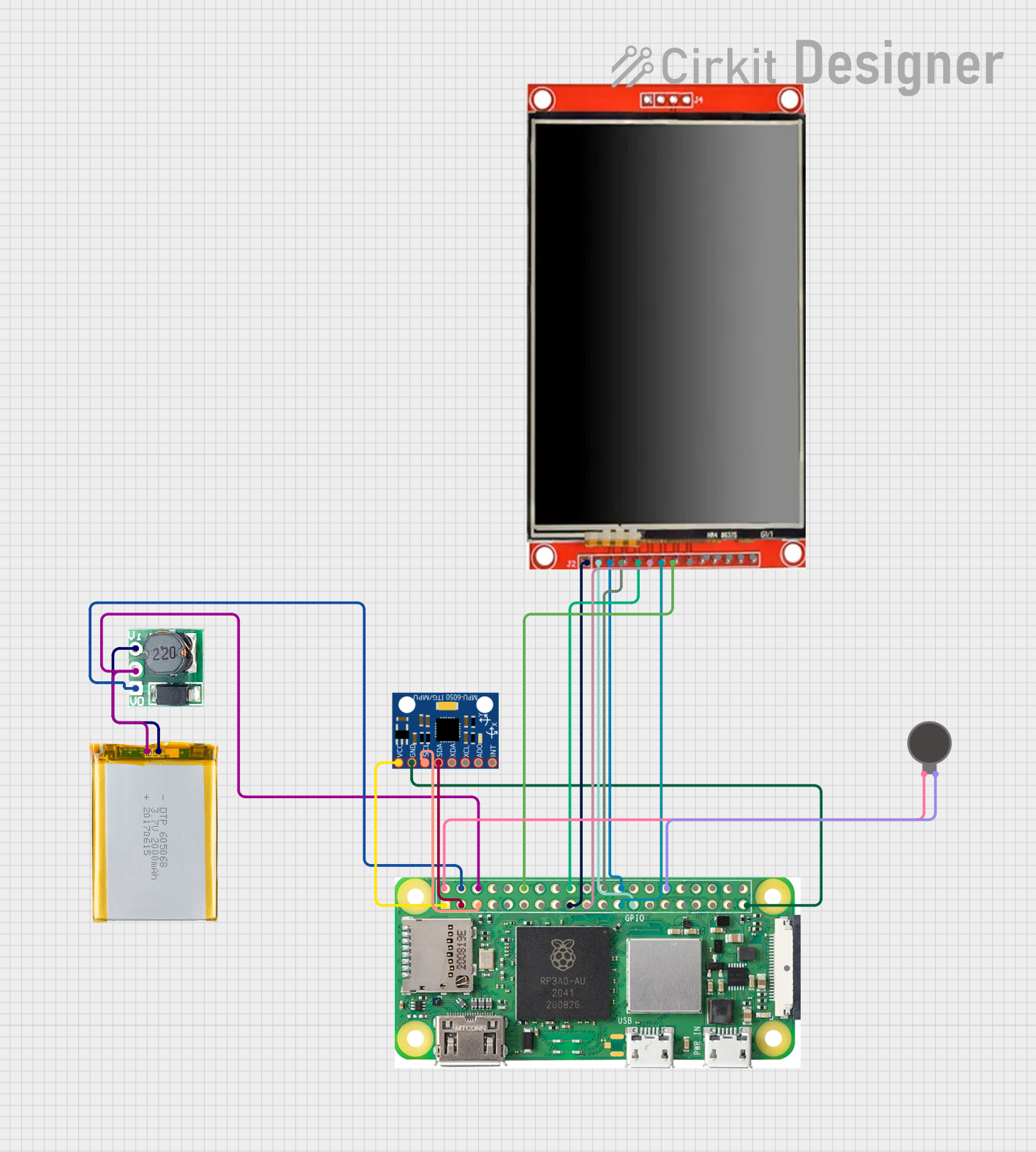
How to Use Adafruit PowerBoost 1000C: Examples, Pinouts, and Specs

 Design with Adafruit PowerBoost 1000C in Cirkit Designer
Design with Adafruit PowerBoost 1000C in Cirkit DesignerIntroduction
The Adafruit PowerBoost 1000C is a versatile power supply module designed for portable electronics. It can drive your projects with a single lithium polymer (LiPo) or lithium-ion (LiIon) rechargeable battery, providing a stable 5V output. The PowerBoost 1000C is equipped with a built-in battery charging circuit that supports USB charging with automatic switching between charging and operation modes. This makes it ideal for battery-powered projects such as wearable electronics, portable instruments, USB chargers, and any USB-powered gadget.
Explore Projects Built with Adafruit PowerBoost 1000C

 Open Project in Cirkit Designer
Open Project in Cirkit Designer
 Open Project in Cirkit Designer
Open Project in Cirkit Designer
 Open Project in Cirkit Designer
Open Project in Cirkit Designer
 Open Project in Cirkit Designer
Open Project in Cirkit DesignerExplore Projects Built with Adafruit PowerBoost 1000C

 Open Project in Cirkit Designer
Open Project in Cirkit Designer
 Open Project in Cirkit Designer
Open Project in Cirkit Designer
 Open Project in Cirkit Designer
Open Project in Cirkit Designer
 Open Project in Cirkit Designer
Open Project in Cirkit DesignerCommon Applications and Use Cases
- Portable USB chargers
- Wearable electronics
- Battery-powered Raspberry Pi or Arduino projects
- DIY smartphones or gaming devices
- Mobile robotics
Technical Specifications
Key Technical Details
- Input Voltage (VIN): 3.7V nominal (LiPo/LiIon battery voltage)
- Output Voltage (VOUT): 5V regulated output
- Peak Output Current: Up to 1A
- Charging Current: Up to 1000mA (adjustable)
- Efficiency: 90%+
- Quiescent Current: <5mA
Pin Configuration and Descriptions
| Pin Name | Description |
|---|---|
| BAT | Battery input terminal |
| GND | Ground connection |
| 5V | Regulated 5V output |
| EN | Enable pin (active high) |
| USB | USB input for charging |
| LBO | Low battery output (active low) |
Usage Instructions
How to Use the Component in a Circuit
Connecting the Battery:
- Connect the positive terminal of the LiPo/LiIon battery to the
BATpin. - Connect the negative terminal to the
GNDpin.
- Connect the positive terminal of the LiPo/LiIon battery to the
Powering Your Project:
- Connect the
5VandGNDpins to your project's power input.
- Connect the
Charging the Battery:
- Connect a USB cable from a power source to the
USBport on the PowerBoost 1000C.
- Connect a USB cable from a power source to the
Enabling/Disabling the Output:
- To enable the 5V output, connect the
ENpin toGND. To disable, leave it floating or connect it to5V.
- To enable the 5V output, connect the
Important Considerations and Best Practices
- Do not exceed the recommended input voltage as it may damage the board.
- Ensure the polarity of the battery is correct to prevent damage.
- Avoid drawing more than 1A from the 5V output to maintain stable operation.
- Use a quality USB cable for charging to ensure proper current flow.
Troubleshooting and FAQs
Common Issues
- Battery not charging: Check the USB cable and power source. Ensure the battery is properly connected with correct polarity.
- No output voltage: Ensure the
ENpin is connected toGNDto enable the output. - Output voltage drops under load: This may occur if the load exceeds 1A. Reduce the load to within the specified limits.
Solutions and Tips for Troubleshooting
- Double-check all connections, especially the battery and enable pin.
- Use a multimeter to verify the battery voltage and output voltage.
- If the LBO pin is active (low), the battery is under-voltage. Recharge the battery.
FAQs
Q: Can I use the PowerBoost 1000C with a battery that has a higher capacity? A: Yes, as long as the battery voltage is within the range of 3.7V nominal.
Q: Is it possible to adjust the charging current? A: Yes, the charging current can be adjusted by changing the resistor on the charging circuit.
Q: What should I do if the PowerBoost 1000C gets hot during use? A: Ensure that the current draw is within the specified limits and that there is adequate ventilation around the board.
Example Code for Arduino UNO
// This example demonstrates how to use the Adafruit PowerBoost 1000C
// with an Arduino UNO to power the Arduino from a LiPo battery.
void setup() {
pinMode(13, OUTPUT); // Use the onboard LED as an indicator
}
void loop() {
digitalWrite(13, HIGH); // Turn the LED on
delay(1000); // Wait for a second
digitalWrite(13, LOW); // Turn the LED off
delay(1000); // Wait for a second
}
// Note: The PowerBoost 1000C does not require specific code to operate.
// It simply provides power to the Arduino. This example is to show that
// the Arduino can run on battery power through the PowerBoost 1000C.
Remember to keep the code comments concise and within the 80 character line length limit. The example provided is a simple blink sketch that demonstrates the Arduino running on battery power supplied by the PowerBoost 1000C.